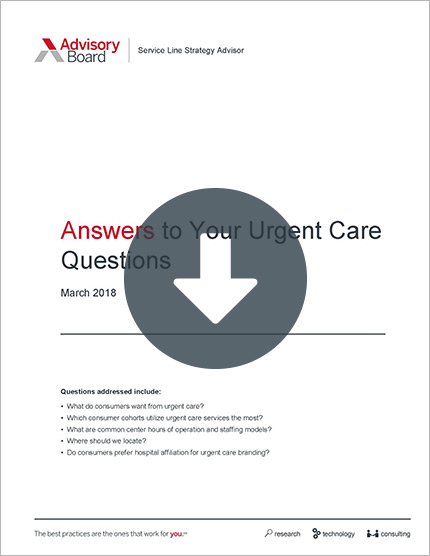Auto logout in seconds.
Continue LogoutHospitals in recent years have changed significantly to meet the public's needs, but contrary to claims prominently made by Ezekiel Emanuel and others, they aren't becoming "obsolete," Northwell Health president and CEO Michael Dowling writes for Becker's Hospital Review.
Get tactics for attracting and retaining patients to your outpatient site
The changing landscape
Dowling's article is an apparent response to a much-discussed op-ed by Ezekiel Emanuel in the New York Times, which argued that "while (hospitals) may never completely go away, they will continue to shrink in number and importance. That is inevitable and good."
Dowling acknowledges that "the industry's ever-shifting landscape is riddled with shuttered hospitals" and has led to an increase in consolidation among health systems.
But he argues that claims that hospitals are becoming obsolete "represent naïve points of view from armchair intellectuals who clearly haven't spent much time recently in a hospital." He added, "Hospitals will evolve to reflect ongoing changes in the way health care is delivered and paid for."
He notes that many in the health care industry "have spent the past 10-15 years adapting our models of care, moving more and more services to outpatient settings where patients can be treated more conveniently and less expensively." For example, he notes that 10 years ago, 85% of Northwell's revenue came from its hospitals, compared with just 54% today—and the drop is likely to continue going forward.
Further, while continuing to offer maternity and pediatric services, many hospitals have become "more like intensive care units, treating trauma and emergency patients, and those requiring major surgery and other highly skilled, advanced care," Dowling writes.
"Interestingly," Dowling writes, "the movement of clinical services out of the hospital and investments in ambulatory expansion into communities where health systems previously did not have a presence can actually lead to increases in hospital admissions" because hospitals are coming in contact with an "entirely new patient base, some of whom will require integrated care that can only be provided in a hospital setting."
And while outpatient facilities, such as urgent care centers and mini clinics, will continue to flourish, those facilities "are often scarce in low-income communities, which makes it increasingly important to preserve safety-net hospitals." Dowling writes that safety net hospitals "tend to be the economic anchor of their communities, employing hundreds of people and supporting local businesses. Allowing them to fail would create even greater health disparities within local neighborhoods where chronic illness is already prevalent."
Dowling also writes that technological advances have "empowered patients to take care into their own hands." As devices such as wearables and self-monitoring devices continue to advance and develop, Dowling writes that "patients will become more adept at monitoring their own health and turning to Dr. Google to determine their own course of treatment," a shift that could potentially lead to the decline of some primary care practices. But, Dowling writes, "the highly skilled care offered by hospitals will remain a constant."
"All of us recognize that evolution is a natural part of the health care industry," Dowling writes. There will be hospitals that will downsize or turn into ambulatory or specialty care facilities, and others will close, "but as our history has shown, most will adjust to the changing needs of their communities and continue to fulfill our shared mission," he concludes (Dowling, Becker's Hospital Review, 4/4; Emanuel, New York Times, 02/25).
Get ready-to-use slides on the latest health care trends in 2018
We updated our most popular slides depicting the important market forces affecting your business in 2018, so you're ready for your next strategy presentation.
Don't miss out on the latest Advisory Board insights
Create your free account to access 1 resource, including the latest research and webinars.
Want access without creating an account?
You have 1 free members-only resource remaining this month.
1 free members-only resources remaining
1 free members-only resources remaining
You've reached your limit of free insights
Become a member to access all of Advisory Board's resources, events, and experts
Never miss out on the latest innovative health care content tailored to you.
Benefits include:
You've reached your limit of free insights
Become a member to access all of Advisory Board's resources, events, and experts
Never miss out on the latest innovative health care content tailored to you.
Benefits include:
This content is available through your Curated Research partnership with Advisory Board. Click on ‘view this resource’ to read the full piece
Email ask@advisory.com to learn more
Click on ‘Become a Member’ to learn about the benefits of a Full-Access partnership with Advisory Board
Never miss out on the latest innovative health care content tailored to you.
Benefits Include:
This is for members only. Learn more.
Click on ‘Become a Member’ to learn about the benefits of a Full-Access partnership with Advisory Board
Never miss out on the latest innovative health care content tailored to you.

